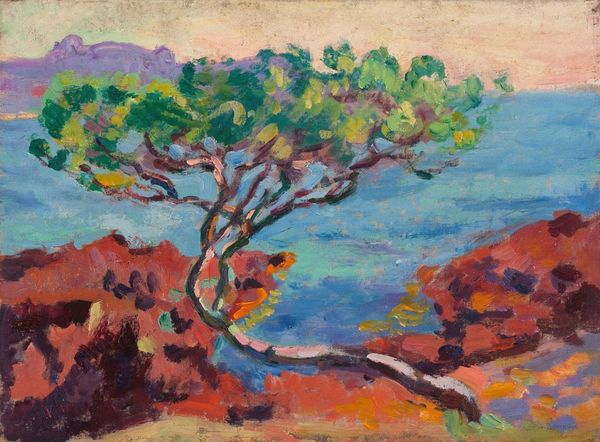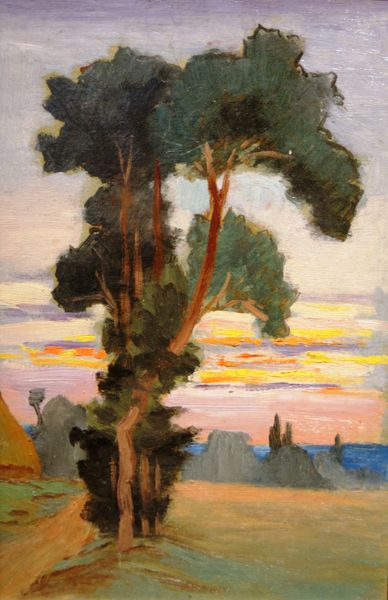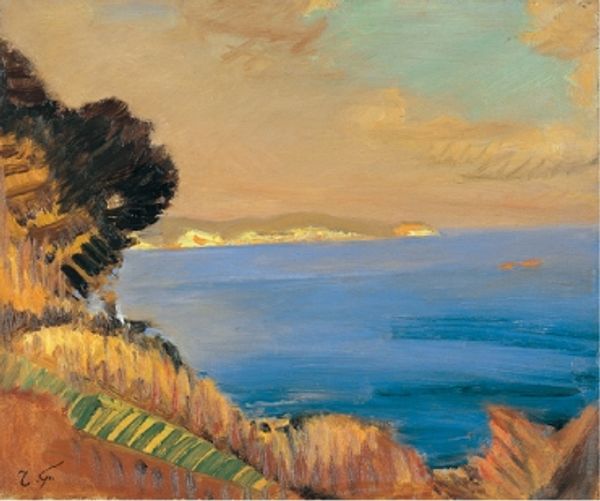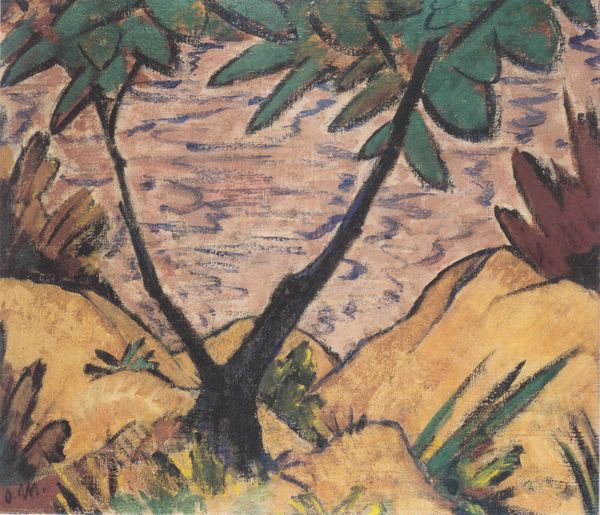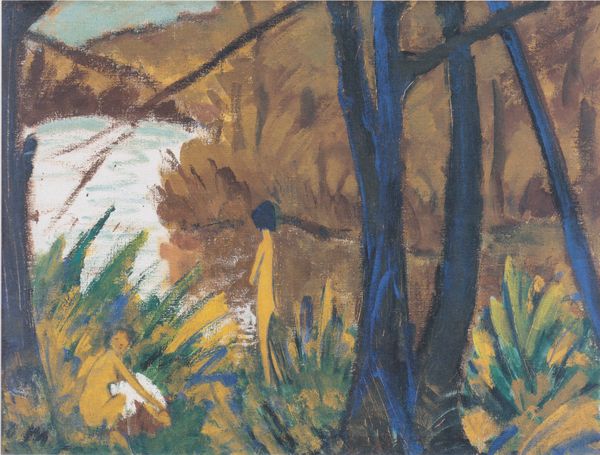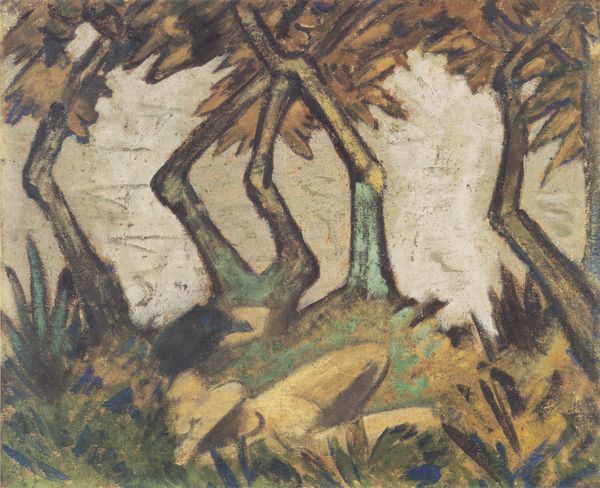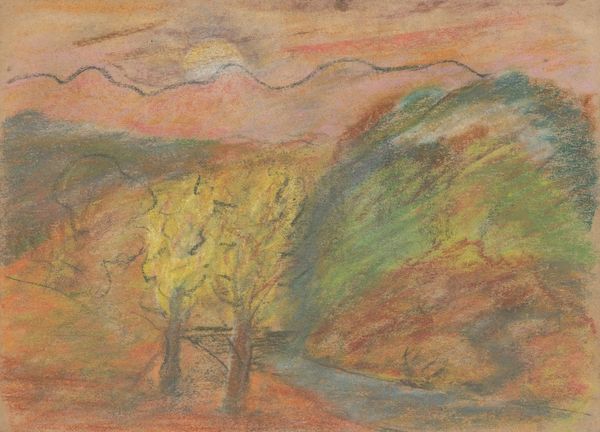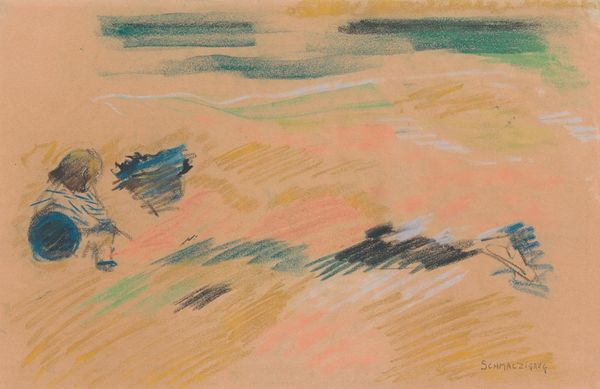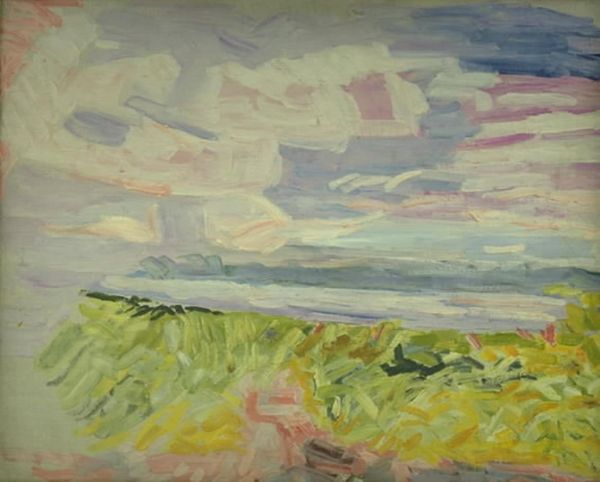
Copyright: Public domain
Curator: Standing before us is Nicholas Roerich's oil on canvas from 1919, titled *Coast Ledenets.* What a striking piece. Editor: My first thought is about solitude, perhaps resilience too. That solitary tree against the vast landscape feels both exposed and deeply rooted, a potent symbol in times of upheaval. Curator: Absolutely, that tree does feel iconic. Roerich’s works often explore the spiritual significance of nature, tapping into archetypal imagery. Remember, he was painting this during a tumultuous time in Russia, post World War I. Landscape painting allowed him to explore themes of continuity and endurance during widespread change and revolution. Editor: The colours, especially that pervasive yellow, also speak to that feeling of uncertainty—a jaundiced view of the world maybe? But there is hope as well, in the bright greens pushing through in the landscape. It highlights how socio-political realities shape the mood in artworks. Curator: The yellow reminds me of enlightenment. It speaks to seeking spiritual understanding within oneself through experiencing natural phenomena. The brushwork might appear simple, but consider Roerich's interest in Eastern philosophies. Here, the tree could be seen as representing a spiritual axis mundi, connecting the earth and sky. Editor: An interesting read. I interpret the windswept tree more as defiance, or perseverance under immense pressure. The romanticism inherent in the style echoes wider artistic trends too—movements exploring human spirit under extreme duress following global unrest. Did these aesthetics affect the social role of the image? Curator: Roerich used plein-air to investigate figuration, making each scene one with internal thought. His romantic and stylized depictions certainly lent themselves well to shaping narratives of resilience and national identity. Through symbols and colours, he was visually building bridges to deeper emotional resonance for his audience. Editor: It really does make you think how paintings capture, reflect, and then reinforce the collective hopes and fears circulating at specific historical junctures. Thanks for providing such a nuanced exploration. Curator: The pleasure was all mine. Considering all that, the painting remains relevant because its core essence explores the connection between the natural world and our emotional well-being during crises, reminding us how much of culture passes on by imagery, especially through tumultuous periods.
Comments
No comments
Be the first to comment and join the conversation on the ultimate creative platform.
